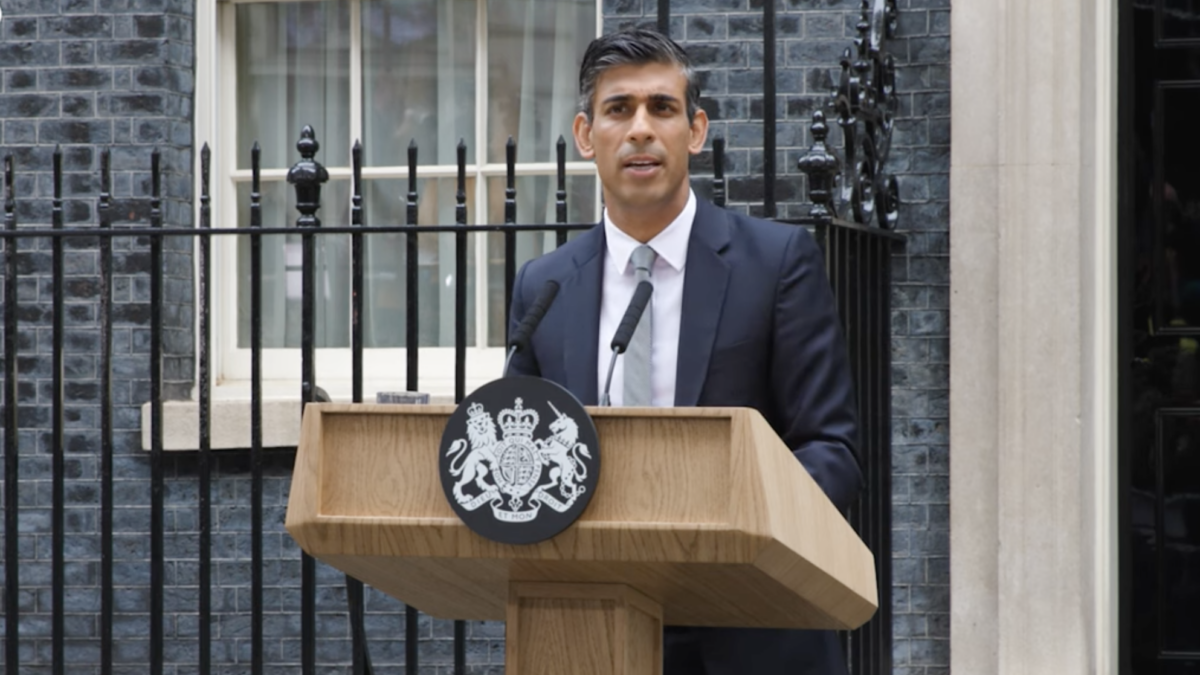
As the fighting in Yemen heats up and many countries evacuate their citizens, the plight of 41 Americans stuck in Yemen (and their lawsuit against the State Department) has received national attention. This kind of issue is likely to become more common in the future as more and more Americans choose to live beyond our borders.
While immigration is a popular political issue, with both parties often engaging questions about how many people should be able to move to the United States, from where, and with what qualifications, emigration from the United States is on the rise. In developing countries, and even in many rich countries like France, Italy, or Israel, emigration is a major policy concern. But in the United States, we don’t talk about or emigrant population, which I’ll call the American “diaspora.”
Yet the growing American diaspora matters for American culture, economic vitality, and political influence. A growing American diaspora will put new pressures on our obsolete tax code, create new security challenges, and change the way many Americans go about finding a job.
How Many Americans Emigrate?
Nobody “officially” tracks how many Americans emigrate each year. In fact, this particular data collection problem has plagued researchers for years. Are there 2 million Americans abroad? Three million? Nine million? The U.S. government chooses to remain in the dark on this basic question by not systematically and rigorously collecting data, almost alone among developed countries.
Using data from the World Bank and United Nations Population Division, I’ve put together a global table of the American diaspora. However, this is a low estimate of the diaspora. There are lots of Americans abroad excluded from my sample: military and diplomatic personnel, temporary workers, long-term tourists, many illegal emigrants (yes, people illegally enter foreign countries from the United States), and some others. So my numbers should be taken as floor for the diaspora, not a ceiling.
There are far more immigrants into the United States than emigrants from the United States. The numbers are pretty amazing: in 2013, there were 41 million foreign-born individuals residing in the United States, compared to just 2.8 million U.S.-born individuals residing abroad. But while the foreign-born population essentially flatlined from 2010 to 2013, the U.S. diaspora grew by 200,000 individuals. Based on these changes in migrant stocks, we can derived estimated net migration rates.
Much of the United States’s falling net migration since 2010 is due to rising emigration of the U.S.-born, not just falling immigration by the foreign-born. I’ve also included the official United Nations (UN) estimate of net migration in the United States (dark gray), as well as Census Bureau estimates of net migration into the United States (light gray), for comparison.
Where Does the Diaspora Live?
Americans don’t just migrate “abroad,” as if the rest of the world were some nebulous blob into which emigrants vanish. Rather, American emigration reflects ties of language, history, and even political alliance.
American emigrants are disproportionately concentrated among Anglophone countries, our political allies, and countries with large diasporas in the United States. This makes sense, as those are the countries where emigrants will have the easiest time finding work and making connections through shared language, government or non-governmental organization ties, or family and social networks.
In terms of raw numbers, about one-quarter of the American diaspora, or 670,000 emigrants, lives in Mexico. In terms of their share of the local population, the American diaspora is largest in Guam, the Cayman Islands, American Samoa, Bermuda, and Puerto Rico: over 5 percent of the population in each. There are virtually no countries outside of the Caribbean or American possessions where more than 1 percent of the population is American, except for micro-states like Monaco and San Marino.
Where Are Recent Expatriats Going?
So if the above map shows where Americans are in 2013, the question remains: what were the big changes since 2010 that led to larger emigration?
Comparing the period 2010-2013 to 2000-2010, several countries saw accelerated migration, while others slowed down. The United Kingdom, Germany, Italy, Greece, Israel, Nigeria, and Argentina all saw an increase in annual immigrants from the US of at least 500 people. Meanwhile, the rate at which U.S.-born individuals immigrated to Mexico, Germany, Spain, Australia, Jordan, and Ecuador slowed down substantially.
Comparing Net Migration Rates
Changes in migrant stocks can be used to approximate the United States’s bilateral migration flows with other countries. The results are “fuzzier” because it’s possible a U.S.born individual could move from, say, the United Kingdom to India, but let’s assume such foreign-to-foreign migrations among the U.S.-born are irrelevant.
From 2010 to 2013, the United States has had an average 34,000 person, per year loss of people to Mexico. Those teeming hordes of migrants trying to cross the border? They’re headed south.
Of course, negative migration with Mexico doesn’t actually mean negative migration across the Mexican border. The United States still receives immigrants from El Salvador, Colombia, Nicaragua, and other countries, and those immigrants usually arrive through the U.S.-Mexican border. But the point is, increasingly, Mexican migration is changing. The new out-migration to Mexico is partly Mexican-born individuals in the United States going home, and partly U.S.-born individuals moving to Mexico (in many cases, these U.S.-born individuals are the children of Mexican returnees). Meanwhile, immigration from Asia is accelerating: net migration from India, China, and the Philippines came to about 200,000 individuals.
Ties that Bind… or Loose
I said earlier that a large and engaged diaspora was an asset. But that’s only true if the diaspora maintains economic and social ties to the homeland, and carries a positive or hopeful vision for home. To be useful, that vision of home also needs to jive with what those back home actually want. Diasporas that harbor old grudges and grievances may even actively work against the political goals of their homeland’s government (think of Cubans in the United States, for example).
One simple barometer of how the diaspora feels about the United States is how many of them renounce their citizenship. The Internal Revenue Service posts a quarterly bulletin of citizenship renunciations.
Since 2009, citizenship renunciations have skyrocketed, despite the fact that the State Department raised the price of the renunciation paperwork from about $400 to over $2,000 in 2014. Yes, that’s right, it costs $2,000 to officially abandon a United States citizenship. The main reason for these renunciations is the Foreign Account Tax Compliance Act (FATCA) which places onerous tax burdens on many Americans abroad. Burdensome legal hurdles to maintaining ties to the United States make it more likely that the American diaspora becomes disenfranchised, and decreases the likelihood of positive diasporan engagement.
Voter participation abroad has remained static or fallen, as well. In the 2008 elections, 273,000 Americans abroad submitted overseas ballots. In 2012, that number had barely risen to 278,000. But the diaspora grew from approximately 2.4 million to 2.7 million people. Assuming that just a fifth of the diaspora is eligible to vote, that’s a decline from 46 percent turnout to 41 percent. The national average went from 62.2 percent to 58.6 percent. But it seems likely as well that a rising proportion of the U.S.-born diaspora do not strongly identify as participants in American civil society.
The American Diaspora: The Fifty-First State?
With between 2.2 and 6 million Americans abroad right now, the path to 10 or even 20 million American diasporans is not hard to imagine. Put another way, the diaspora amounts to somewhere between New Mexico and Maryland in terms of population. Assuming there are 3 million residents, the diaspora would be thirty-first-largest state: not huge, but hardly negligible.
Moreover, the diasporan population has grown by 10.8 percent each year from 2010 to 2014. The fastest-growing state, North Dakota, has grown by 9.9 percent. In other words, the diaspora is outgrowing a massive migration-fueled oil boom at its peak.
From 2000 to 2014, the diaspora has grown 31 percent, behind only Utah and Nevada. It would be hard to imagine a policymaker suggesting that we just leave Maryland out to dry in the event of a disaster or a terrorist attack there: the day is coming when diasporans may make such claims for themselves.
Vladimir Putin has infamously asserted a “duty to protect” the Russian diaspora as justification for Russia’s invasion of Crimea and support of rebels in eastern Ukraine. While we may rightly condemn this aggression, one can’t help but wonder how we will react when the day comes that an American diaspora is threatened in Latin American countries, where they represent between 1 percent and 13 percent of the population. If the tens of thousands of American retirees in Costa Rica came under threat, would we simply declare that they knew the risks when they emigrated?
A Duty to Protect?
Given that the U.S.-born diaspora is one of the most widely dispersed diaspora in the world, the United States will face growing pressures to maintain a global diplomatic and security presence. The case of Yemen is a perfect example of this pressure, and ultimately an embarrassment: Americans were advised to seek passage on Indian vessels, even as the United States brought an aircraft carrier around to have a staring contest with Iranian vessels.
More Americans are going to live abroad, and thus this situation is going to happen time and time again. American citizens from Mexico City to Benghazi to Yemen to South Korea are going to be living and working in global flashpoints, which will complicate how we do national security.
Countries without diasporas don’t have these problems. Sometimes, having a big diaspora means that innocent diasporans complicate the best-laid plans of strategists and defense planners. In other cases, it means that American citizens adopt positions totally hostile to the United States, putting our nation’s security apparatus in something of a tricky gray area.
This contradicts the hopes of those policymakers who look forward to an era of diminishing claims on U.S. security guarantees. In the future, even if foreign governments ask for U.S. involvement less, American citizens abroad may demand it more. And while some countries have the luxury of only worrying about their diasporas in one or two countries, the United States is in a position of managing a diaspora spread through more than 100 countries. Commonly enough, Americans view the rest of the world as the rest of the world’s problem. Unfortunately, in an increasingly globalized world, that attitude will lead to disastrously bad policy for Americans abroad.
What’s Next for Americans Abroad?
What will it mean for us not only when a growing share of residents are non-citizens, but when a growing share of citizens are non-resident? A few key policies stand out.
Taxes
A growing diaspora means a sharper focus on U.S. tax policy, especially the income tax. The FATCA, in particular, has enraged much of the American diaspora with its excessively high compliance burdens due to the United States’ outdated tax code. The only country that taxes foreign income like the United States is Eritrea. The enormous compliance burdens for banks with American customers have made it harder for Americans abroad to get banking services, as well.
Yet Americans abroad consume relatively few public services, and would prefer to face the same legal conditions as other foreigners abroad, to compete on equal footing. As it is, the U.S.-born diaspora is uniquely penalized by its home country. As long as we’re not going to rescue our diasporan citizens in Yemen, we probably shouldn’t make them pay needlessly complex taxes on top of Yemeni taxes and the threat of death at the hands of rebels. That’s just insulting.
National Security
The United States is not going to experience a diminishing demand for cyclone and disaster relief or for security guarantees, in no small part because it will be American citizens and American businesses these foreign operations increasingly protect and support. Nor will the War on Terror ever get simpler to prosecute, as a growing share of the nation’s enemies are likely to be its own citizens abroad, as many European nations are discovering in regards to ISIS.
This does not necessarily mean we should respond to all of those diasporan demands for protection or support (especially in the fashion that Russia has exemplified), but does mean we need to be cognizant of these demands. Diasporans are a large constituency, larger than many states, and a constituency uniquely placed to help or hinder U.S. foreign policy.
Jobs
Hundreds of thousands of Americans work abroad at any given time. Through private corporations and NGOs, the civilian and military government work, entrepreneurship, or short-term work as English teachers, Americans are building networks abroad. Few of these people are likely to be unemployed abroad, but they may have been if they stayed in the United States. Emigration for work or school, then, reduces unemployment.
For all the complications that come with a globalized citizenry, the possibility of international employment and career advancement might come to be a true silver lining. Much of the world’s economic growth is occurring outside of the United States, especially in Asia and Africa. In the nineteenth century, international movement was essentially unrestricted, so wherever economic growth happened, people could move to share it (such as the Irish moving to the United States).
But that’s not the world we live in now. Much economic growth is closed to Americans due to legal or informal barriers to work abroad, such as visa requirements. But negotiating visa facilitation agreements with other countries and reducing barriers to labor migration for Americans (such as the provisions likely to be included in the Trans-Pacific Partnership), policymakers can provide Americans today with the same option our ancestors had: emigrate, and prosper.









